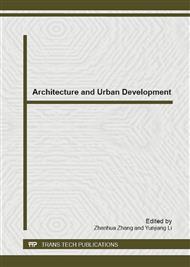p.279
p.283
p.289
p.293
p.299
p.303
p.310
p.314
p.318
Study on Dynamic Properties of Semi-Active Seism Isolator for Building
Abstract:
The dynamic properties of semi-active seism isolator for building made of magnetorheological elastomers (MRE) were studied. Semi-active seism isolators were designed with MRE, and their dynamic properties at different amplitudes, frequencies, preloads or currents were tested. The results show that the dynamic stiffness decreases with the increase of amplitude or preload, but increases with the rise of frequency or current; the damping ratio ascends with the increase of amplitude, but declines with the rise of preload.
Info:
Periodical:
Pages:
299-302
Citation:
Online since:
November 2012
Authors:
Price:
Сopyright:
© 2012 Trans Tech Publications Ltd. All Rights Reserved
Share:
Citation:


